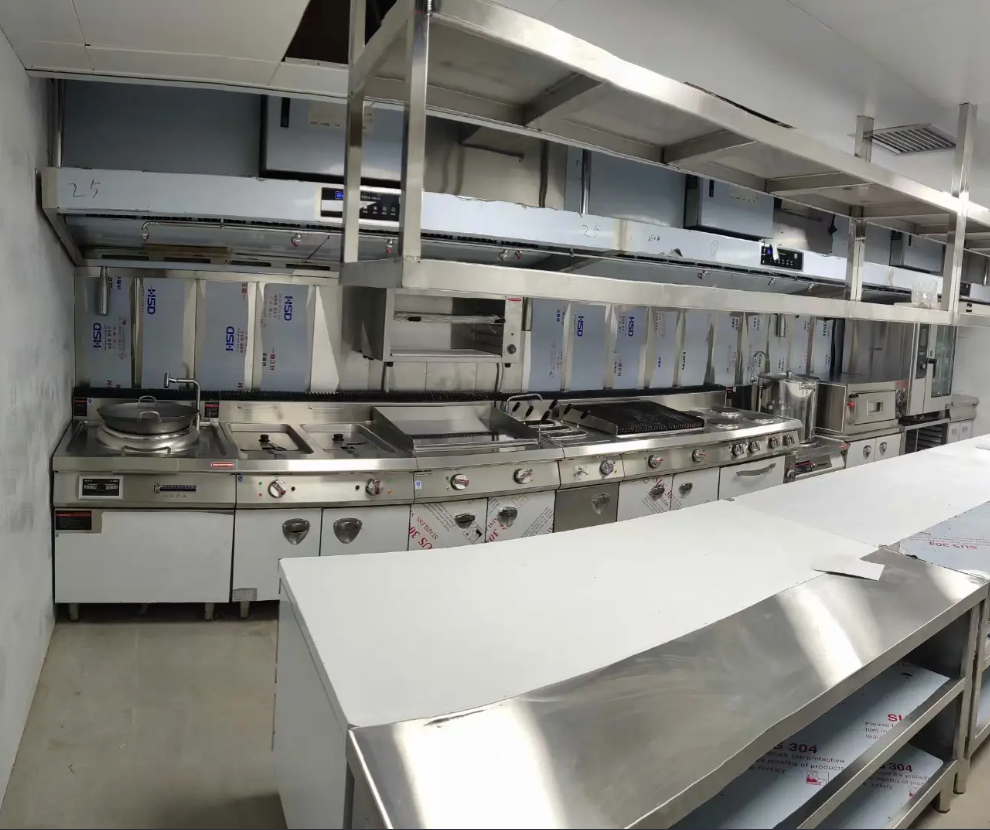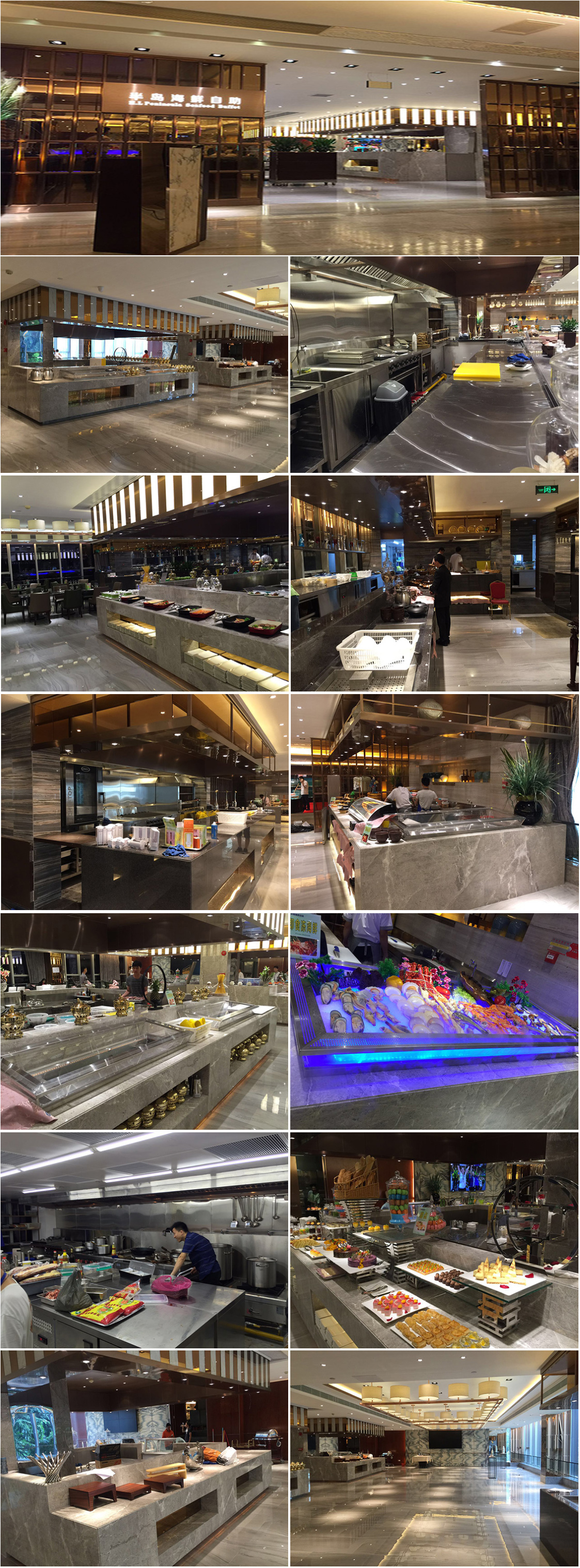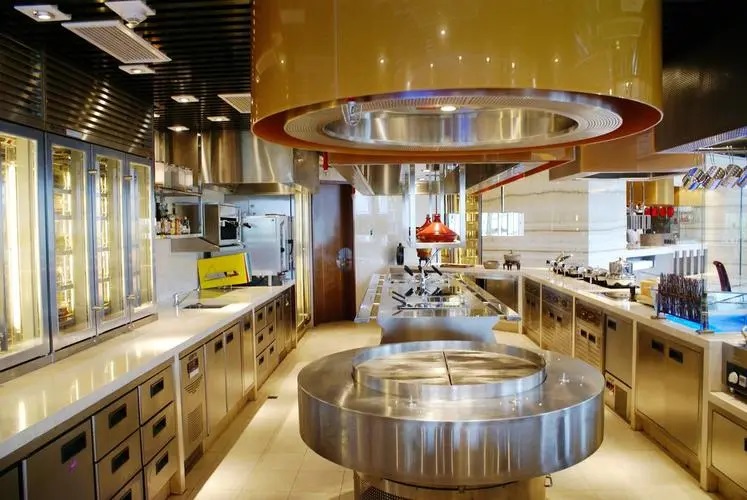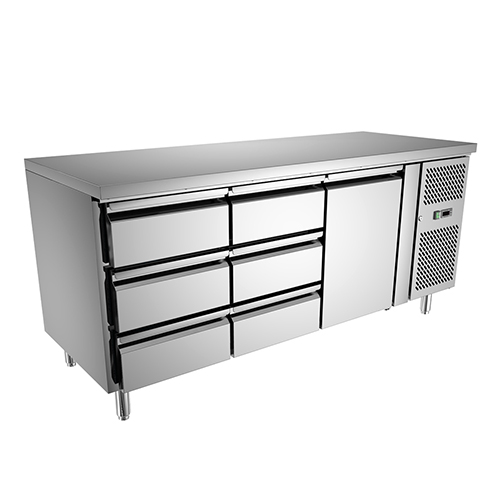Designing a restaurant kitchen is a complex and critical process that requires careful consideration of various factors to ensure efficiency, safety, and functionality. In this comprehensive guide, we will explore the key aspects of restaurant kitchen design, from layout and equipment selection to workflow optimization and compliance with health and safety regulations.
Introduction
The kitchen is the heart of any restaurant, where culinary creativity comes to life and the magic of food preparation happens. Designing an efficient and well-organized restaurant kitchen is essential for the success of the establishment. A thoughtfully designed kitchen not only enhances the overall dining experience but also contributes to the productivity and satisfaction of the kitchen staff. In this guide, we will delve into the step-by-step process of designing a restaurant kitchen, covering key considerations, best practices, and emerging trends.
Step 1: Define Your Concept and Menu
Before diving into the physical design of the kitchen, it’s crucial to have a clear understanding of your restaurant’s concept and menu. The type of cuisine you offer, the complexity of your menu, and the volume of food you plan to produce will significantly influence the layout and equipment requirements of the kitchen.
Cuisine Type: Different cuisines require specific equipment and kitchen setups. For example, an Italian restaurant may need more pasta cookers and pizza ovens, while a sushi restaurant would prioritize sushi preparation stations.
Menu Complexity: A diverse and complex menu may necessitate a larger kitchen space with specialized equipment, while a simpler menu could allow for a more streamlined kitchen design.
Food Preparation Techniques: Consider the cooking techniques and methods used in your kitchen. Will there be a need for grilling, baking, frying, or a combination of these? Each method requires specific equipment and ventilation.
Step 2: Determine Kitchen Layout
The layout of the kitchen plays a critical role in optimizing workflow, ensuring safety, and maximizing efficiency. There are several common kitchen layouts, each with its advantages and considerations:
Assembly Line (or Linear) Layout:
Advantages: Simplifies the flow of food preparation, making it easy to organize tasks sequentially.
Considerations: May lead to congestion and bottlenecks during peak hours.
Island (or Zone) Layout:
Advantages: Creates specialized zones for different tasks, improving organization and efficiency.
Considerations: Requires careful planning to ensure proper flow between zones.
Open Kitchen Layout:
Advantages: Enhances customer experience by allowing them to see the cooking process.
Considerations: Requires effective ventilation and noise management.
Galley (or Parallel) Layout:
Advantages: Maximizes space efficiency, especially in smaller kitchens.
Considerations: May lead to limited workspace for each station.
Combination Layout:
Advantages: Integrates elements of different layouts to meet specific needs.
Considerations: Requires a careful balance to maintain flow and efficiency.
The choice of layout depends on factors such as the size of the kitchen, the number of staff, and the type of cuisine.

Step 3: Plan Workstations and Traffic Flow
Once you’ve selected a layout, the next step is to plan individual workstations and the flow of kitchen traffic. Consider the following:
Hot and Cold Zones:
Place hot preparation areas, such as stoves and ovens, away from cold zones, such as refrigerators and freezers, to minimize energy consumption and maintain food safety.
Preparation Areas:
Designate specific areas for prep work, ensuring that ingredients are easily accessible to chefs and cooks.
Assembly and Plating Zones:
Place assembly and plating areas in close proximity to the cooking stations to minimize the time it takes to transport dishes from the kitchen to the dining area.
Storage:
Ensure that storage areas for dry goods, perishables, and utensils are strategically located for easy access.
Traffic Flow:
Plan for a logical and efficient flow of kitchen staff to prevent congestion. Minimize cross-traffic by organizing workstations in a linear or circular pattern.
Step 4: Select Appropriate Kitchen Equipment
Choosing the right equipment is a critical aspect of restaurant kitchen design. The type and quantity of equipment depend on the menu, volume of customers, and the complexity of food preparation. Consider the following categories of kitchen equipment:
Cooking Equipment:
Select stoves, ovens, grills, fryers, and other cooking appliances based on the menu requirements. Consider energy-efficient options to reduce operating costs.
Refrigeration and Freezing Equipment:
Choose refrigerators and freezers with adequate capacity to store perishable ingredients. Consider walk-in coolers for larger operations.
Preparation Equipment:
Include food processors, slicers, mixers, and other preparation tools to streamline the cooking process and enhance efficiency.
Storage and Shelving:
Invest in high-quality storage solutions, including shelving units, to keep the kitchen organized and ingredients easily accessible.
Ventilation and Hood Systems:
Install a ventilation system with appropriate hoods to maintain air quality and remove heat, steam, and cooking odors from the kitchen.
Dishwashing Equipment:
Consider the volume of dishes your restaurant will handle and choose dishwashing equipment accordingly. High-volume operations may require commercial dishwashers with conveyor belts.
Safety Equipment:
Install fire suppression systems, emergency exits, and first aid stations to ensure the safety of kitchen staff.
Step 5: Optimize Kitchen Workflow
Efficient workflow is crucial for a well-functioning kitchen. Consider the following tips to optimize the kitchen workflow:
Workflow Analysis:
Conduct a thorough analysis of the cooking process from food preparation to plating. Identify potential bottlenecks and streamline the flow accordingly.
Organization and Accessibility:
Arrange kitchen tools, utensils, and ingredients in a way that minimizes the movement of kitchen staff. Keep frequently used items within easy reach.
Communication:
Establish clear communication channels among kitchen staff to coordinate tasks efficiently. Use technology such as order management systems to streamline communication.
Cross-Training Staff:
Cross-train kitchen staff to handle multiple tasks. This flexibility ensures that the kitchen can adapt to fluctuations in demand.
Quality Control Points:
Integrate quality control points in the workflow to ensure that each dish meets the restaurant’s standards before reaching the customer.
Step 6: Ensure Compliance with Health and Safety Regulations
Adhering to health and safety regulations is non-negotiable in a restaurant kitchen. Failing to comply can lead to serious consequences, including fines and closure. Consider the following aspects to ensure compliance:
Sanitation and Hygiene:
Implement rigorous cleaning schedules and procedures to maintain a sanitary environment. Train staff on proper hygiene practices.
Food Safety Measures:
Follow HACCP (Hazard Analysis Critical Control Point) principles to identify and control potential hazards in food handling.
Fire Safety:
Install fire suppression systems, ensure proper placement of fire extinguishers, and conduct regular fire drills to prepare staff for emergencies.
Adequate Ventilation:
Ensure that the kitchen has proper ventilation to remove smoke, steam, and odors. This is not only crucial for the comfort of kitchen staff but also for compliance with safety standards.
Ergonomics:
Design workstations and equipment with ergonomics in mind to reduce the risk of injuries and strain on kitchen staff.
Waste Management:
Implement an efficient waste management system to handle food waste and other kitchen refuse responsibly.

Step 7: Plan for Future Growth
As your restaurant grows, so will the demands on your kitchen. Design with scalability in mind to accommodate future expansions or changes in the menu. Consider the following:
Flexible Layout:
Design a kitchen layout that can be easily adapted to changes in menu offerings or the introduction of new cooking techniques.
Modular Equipment:
Invest in modular and flexible equipment that can be easily upgraded or expanded to meet increased demand.
Technology Integration:
Stay updated on technological advancements in kitchen equipment and systems. Integrating smart technologies can enhance efficiency and adaptability.
Staff Training:
Ensure that staff are trained to adapt to changes in workflow and equipment. Cross-training becomes particularly valuable as the kitchen evolves.
Step 8: Budgeting and Cost Considerations
Balancing the budget is a critical aspect of restaurant kitchen design. Consider the following tips for effective budgeting:
Prioritize Essential Equipment:
Identify the most critical equipment for your menu and prioritize those purchases. Non-essential items can be added later as the budget allows.
Energy Efficiency:
Invest in energy-efficient equipment to reduce long-term operating costs. While the initial investment may be higher, energy savings over time can contribute significantly to the bottom line.
Consider Leasing Options:
Explore leasing options for high-cost equipment to ease the upfront financial burden. Leasing can also provide flexibility for upgrading equipment as needed.
Seek Multiple Quotes:
Obtain quotes from multiple suppliers for equipment and construction services. Negotiate effectively and consider bulk purchasing for potential discounts.
Contingency Fund:
Allocate a contingency fund for unforeseen expenses. Construction and equipment installation projects often encounter unexpected challenges that may require additional funds.
Conclusion
Designing a restaurant kitchen is a multifaceted process that requires careful planning, attention to detail, and a deep understanding of the restaurant’s concept and operational needs. From defining the menu and selecting appropriate layouts to optimizing workflow and ensuring compliance with health and safety regulations, each step is integral to the overall success of the kitchen.
A well-designed kitchen not only enhances the efficiency of food preparation but also contributes to a positive working environment for kitchen staff and an enjoyable dining experience for customers. As the culinary landscape continues to evolve, staying informed about emerging trends and technologies will position your restaurant kitchen for long-term success. Remember that flexibility, adaptability, and a commitment to quality are key elements in creating a kitchen that can thrive in the dynamic and competitive restaurant industry.
About us
Welcome to Guangzhou Acooker Kitchen Equipment Co.,Ltd, where culinary dreams come to life. As a leading one-stop solution commercial kitchen project company, we take pride in providing end-to-end solutions for restaurants, hotels, resorts,bakeries, fast-food establishments, coffee shops,buffet restaurants and more. Our commitment to excellence, innovation, and customer satisfaction sets us apart as the go-to partner for businesses looking to create or upgrade their culinary spaces.
Our Comprehensive Approach:
At Guangzhou Acooker Kitchen Equipment Co.,Ltd , we understand the intricate needs of diverse culinary establishments. Our mission is to simplify the process of setting up or renovating your kitchen by offering a comprehensive range of high-quality equipment tailored to your specific requirements. Whether you’re envisioning a modern restaurant, a cozy coffee shop, or a bustling bakery, we have the expertise and products to turn your vision into reality.How to make design for the hotel and restaurant kitchen
Explore our diverse and extensive product portfolio, carefully curated to cover every aspect of your commercial kitchen project:
Cooking Equipment: Unleash the full potential of your kitchen with our state-of-the-art cooking appliances, including ranges, ovens, grills, fryers, and more.
Refrigeration Equipment: Keep your ingredients fresh and your operations streamlined with our efficient refrigeration systems, ranging from walk-in coolers to display cases.
Bakery Equipment: Elevate your baking game with our specialized bakery equipment, including dough mixers, ovens, proofers, and everything you need for a successful bakery.
Fast Food Solutions: Optimize your fast-food operations with our high-performance equipment designed for speed, efficiency, and quality.
Coffee Shop Essentials: Create a cozy and inviting coffee shop atmosphere with our coffee machines, grinders, and other essentials for the perfect brew.
Why Choose Guangzhou Acooker Kitchen Equipment Co.,Ltd :
End-to-End Solutions: We provide a seamless and integrated approach to commercial kitchen projects, from conceptualization to installation, ensuring a hassle-free experience.
Quality Assurance: Our products undergo rigorous testing to meet and exceed industry standards, ensuring durability, reliability, and optimal performance.
Customer-Centric Focus: Your satisfaction is our priority. Our team is dedicated to providing personalized support, expert advice, and timely maintenance services to keep your kitchen running smoothly.How to make design for the hotel and restaurant kitchen
Innovation: Stay ahead of the curve with our innovative solutions, designed to enhance efficiency, reduce energy consumption, and meet the evolving demands of the culinary industry.
Connect with Us:
Discover how Guangzhou Acooker Kitchen Equipment Co.,Ltd can be the catalyst for your culinary success. For inquiries, consultations, or to explore our comprehensive product range, contact us at andy@acooker.com.
At Guangzhou Acooker Kitchen Equipment Co.,Ltd , we don’t just provide equipment; we deliver a complete solution that ensures your commercial kitchen is equipped for success in every culinary endeavor.
Successful project:

Product Video:  Follow us on Facebook
Follow us on Facebook 
Product Category
| >Cooking Equipment | >Refrigeration Equipment | >Bakery Equipment | >Food Processing Equipment | >S.S. Furniture
| >Food Display Equipment | >Snack equipment | > | >Furniture | >Small Wares




